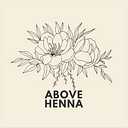What is Henna?
Henna is an art form that has been practiced for over 5000 years. It mainly originated in India, Pakistan, where the art is called ‘Mehndi’, Africa and the Middle East. It is an art form that is mostly used to adorn hands and feet for special occasions like weddings. It is seen as a temporary tattoo. The way it works is as follows: A thick paste is made from the crushed leaves of a henna plant, the paste is applied on the skin, the paste sits on the skin for as long as possible, the longer the paste is on the skin, the darker the stain will be. Then after the paste is taken off, the stain will be visible. It will start to darken in the following 24 hours after which it will slowly begin to fade. All in all, the henna stain could be on the skin for as long as 3 weeks.

Origins of Henna
5000 years ago, in ancient India, it was discovered that putting the leaves off the henna plant on the skin had a cooling effect. People would take the leaves and put them on their hands and feet as they slept. Eventually they started crushing these leaves and making a paste out of it so it would be preserved longer. After putting this past on their hand and feet overnight, they noticed that it left a stain. From there on people started making designs when applying the henna. Until recently, henna was applied with a twig, and later a toothpick. Nowadays it is applied with a henna cone.
Traditions and superstitions around Henna
Traditionally, henna is applied for weddings. There is even a dedicated night in Indian and Pakistani weddings called ‘mehndi ki raat’ or ‘night of henna’. On this night the bride and groom are getting henna applied on their hands and feet. It is said that the darker the henna stain of the bride, the deeper the love the groom has for her. Of course, this is only a superstition. Other occasions henna is applied for are Eid, which is the day signifying the end of Ramadan for Muslims, Diwali, the festival of lights for Hindu’s, and many other occasions.
Henna trends
On social media, there have been several trends surrounding henna. One of them being ‘henna freckles’. For this, henna would be applied in very small dots along the bridge of the nose and on the cheeks, where freckles would normally be. After taking off the paste you would be left with temporary henna freckles.
Another trend is the use of henna to dye hair. This method of dying hair has actually been around for a long time, but recently brands like Lush have jumped on the bandwagon. Lush created a henna block in several colors that one can use to dye hair. Using henna to dye hair is super safe and natural, and besides getting a pretty hair color, you would be conditioning and nurturing your hair as well!
Some of the basics of henna as mentioned in this article are not that well known. What were you surprised by? And what would you like to know more of? Let me know in the comments!
